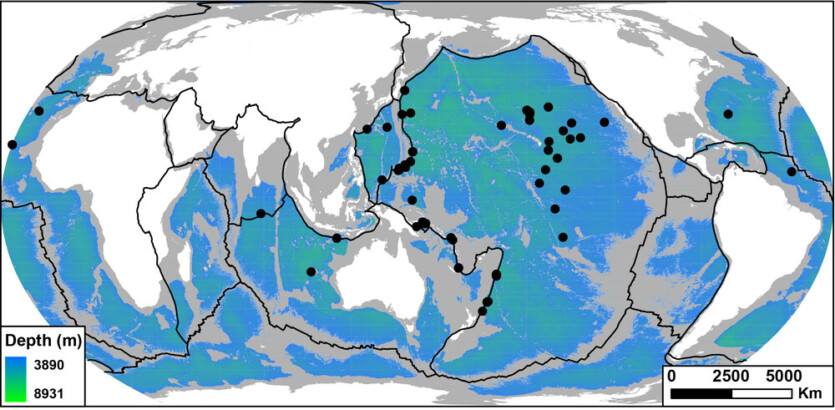
Researchers from the University of Western Australia have found that in the depths of the oceans is home to a rare crustacean.
This creature is called Alicella gigantea and is the largest known species of amphipod — a species close to shrimp, whose representatives are usually quite small. However, individuals of Alicella gigantea can reach 34 centimeters, which is why they are considered giant.
For a long time, scientists believed that these creatures were quite rare. However, recent studies show that Alicella gigantea can be much more widespread and occupy up to 59% of the area of the world’s oceans.

«Historically, it has been rarely studied and observed compared to other deep-sea amphipods, suggesting a low population density. And because this phenomenon was uncommon, little was known about the demography, genetic variability, and dynamics of the population, as only seven studies have been published using DNA sequence data», — explains the marine molecular biologist Paige Maroni.
The fact that these creatures live in the middle of nowhere makes it difficult to find them at great depths to more than 3 thousand meters. Somewhere at a depth of about a kilometer, sunlight no longer penetrates the water column, and there are very cold conditions and high pressure.
Maroni and a group of researchers decided to study Alicella gigantea in more detail. Scientists collected 195 records of these creatures from 75 different locations in the deep Atlantic, Pacific, and Indian Oceans, at depths ranging from 3890 to 8931 meters. They also collected samples for genome sequencing.
Scientists managed to identify genetic similarities between different populations living in different places. Previous studies of deep-sea amphipods suggest that the lack of pigmentation in Alicella gigantea — a rather unusual phenomenon for amphipods that are usually colored in the red spectrum — may be due to the fact that they do not suffer from large predators.
«As deep-sea exploration expands to depths beyond conventional sampling, there is growing evidence that the world’s largest deep-sea crustaceans are far from rare», — Maroni emphasized.
Scientists have found someone similar to the xenomorph from the movies «Alien»
The results of the study were published in the journal Royal Society Open Science
Source: ScienceAlert

Spelling error report
The following text will be sent to our editors: